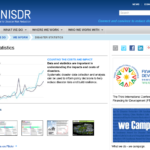Japanese disaster history has three turning points. The first was Typhoon Isewan (Vera) in 1959. The second is the Kobe earthquake disaster in 1995, and the third is the Great East Japan Earthquake and Tsunami (GEJET) disaster in 2011. After Typhoon Isewan, the Disaster Countermeasures Basic Act was enacted in 1961. The act combined many disaster-related laws into one. This act is always updated after disasters. The Kobe earthquake facilitated volunteer activities. Many social scientists started to investigate disasters. Before the disaster, natural scientists and engineers were the main players in disaster-related research, along with Japanese infrastructure-centered policies. We have noticed we cannot prevent disasters, but we can mitigate disasters after Kobe. The GEJET disaster became the worst ever disaster in Japan after the Second World War. Japan had confidence before the disaster because we had two major disaster experiences and polished hard and soft countermeasures.
The GEJET broke confidence and made us reconsider our strategies.
…………………………………..to be continued
*Disaster countermeasures basic act:
http://www.preventionweb.net/english/policies/v.php?id=30940&cid=87





